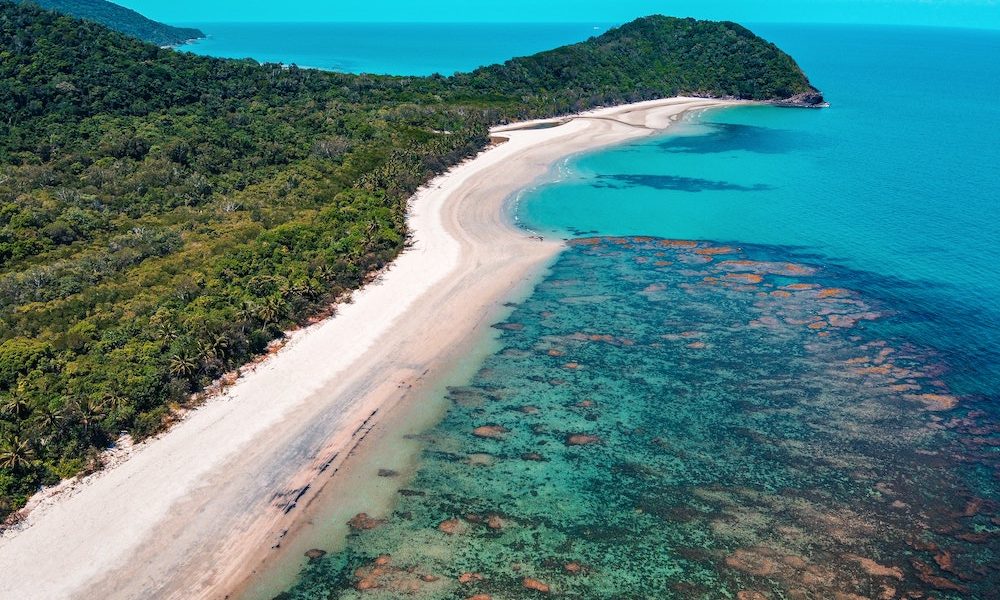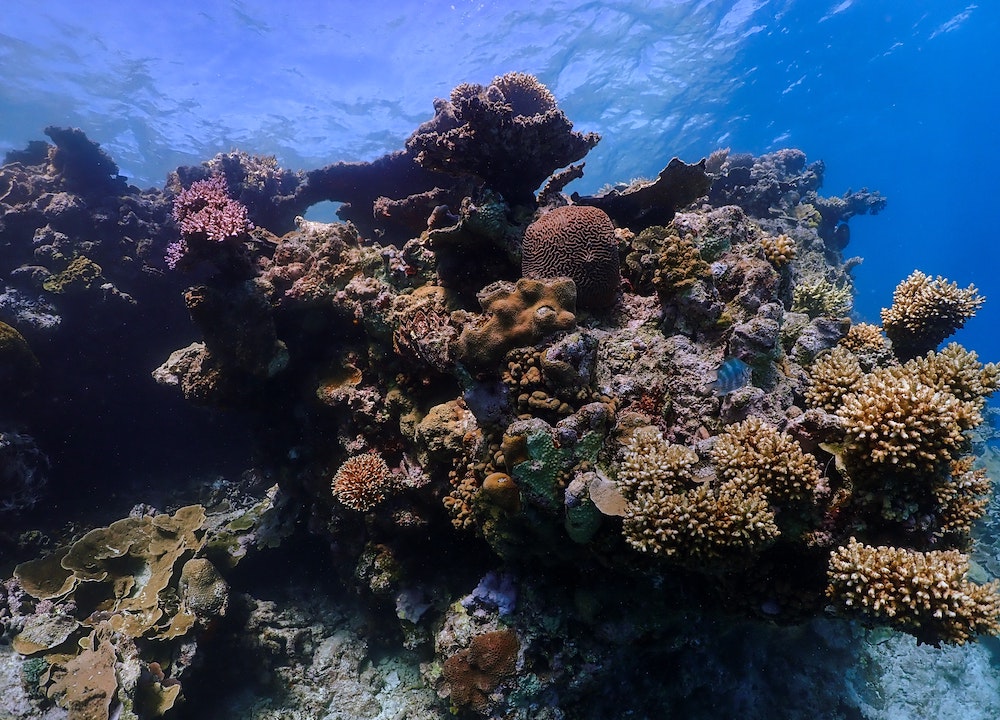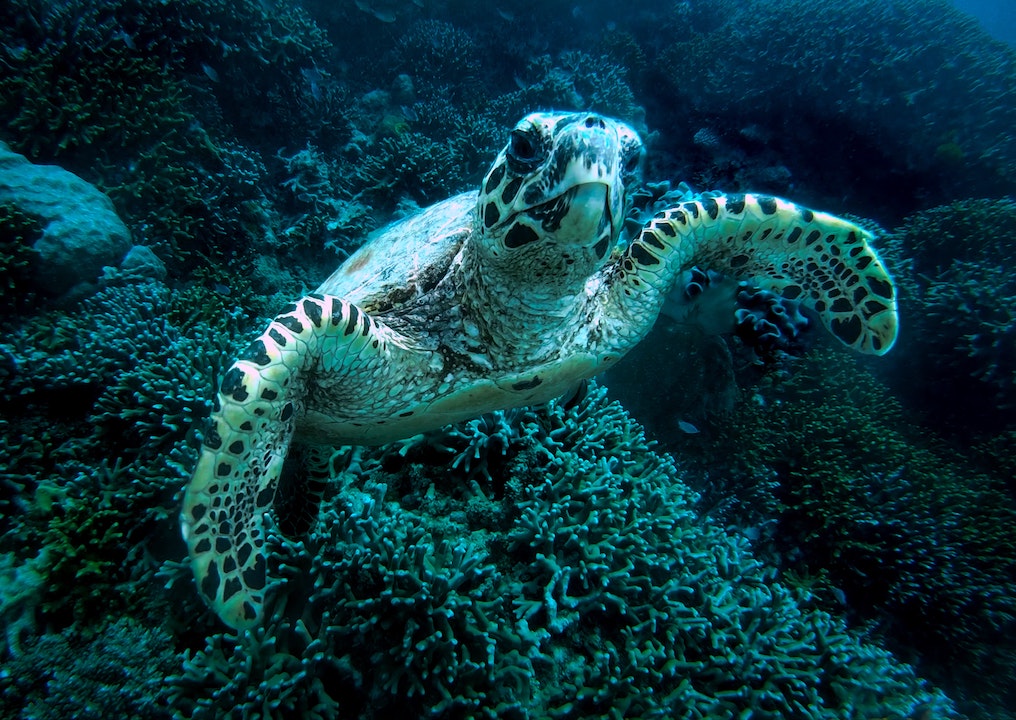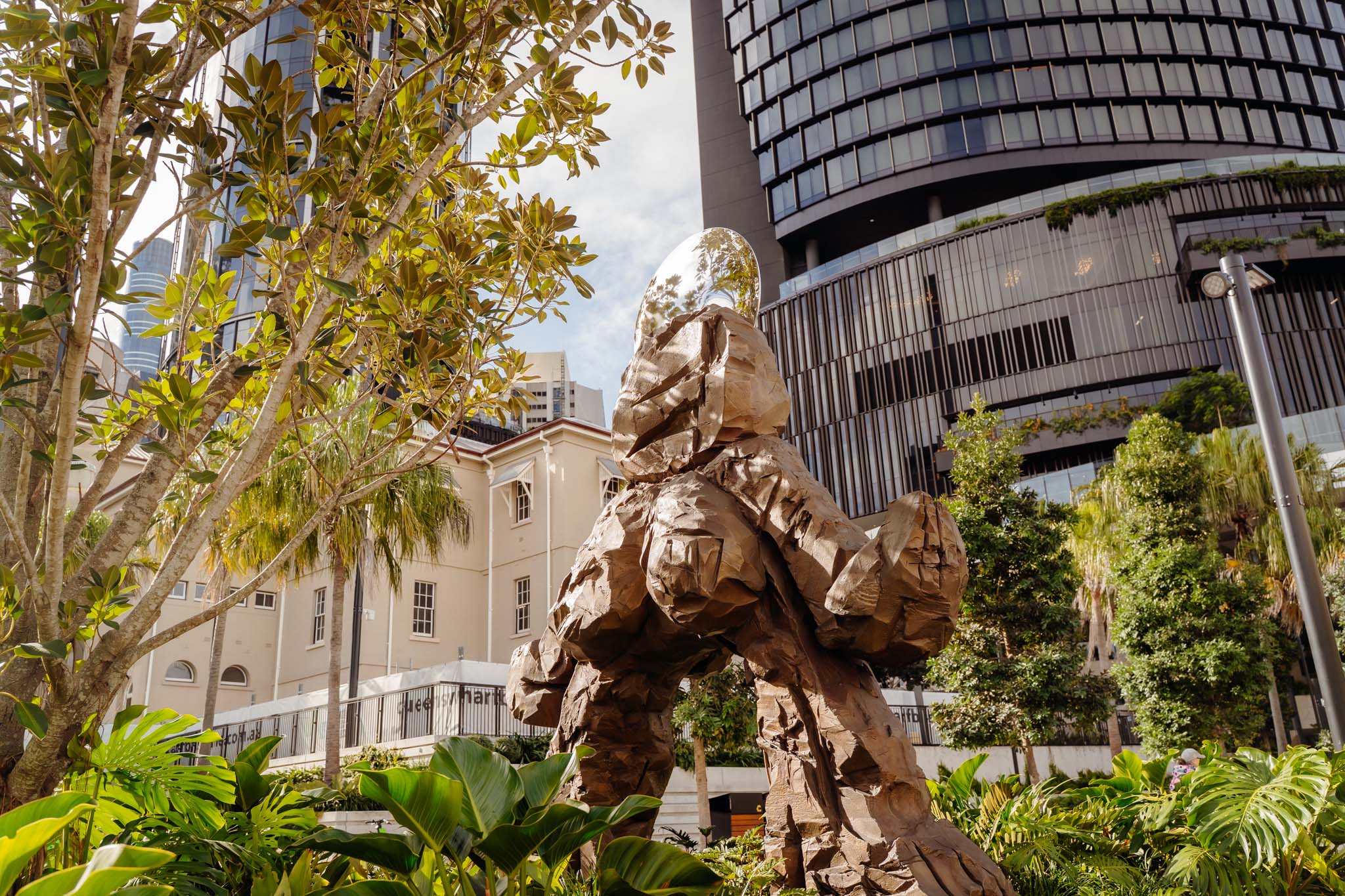“Compromised and in Decline”: A Tragic Tipping Point for Our Reef

- Words by Peppermint
The world’s largest coral reef system, the Great Barrier Reef (GBR), has officially lost 50% of its total coral coverage, new research reveals.
The groundbreaking study, conducted by researchers from the Australian Research Council Centre of Excellence’s Coral Reef Studies unit, draws on two decades’ worth of data collected between 1995 and 2017.
Findings published earlier this month in the Proceedings of the Royal Society confirm what many scientists have long feared: corals on the GBR are dying at an alarming rate.
Populations of small, medium and large corals were all found to have decreased along the length of the 340,000 square-kilometre reef, with an average depletion rate of 50%. The authors added that in some areas, all the corals had been wiped out.
We used to think the Great Barrier Reef is protected by its sheer size – but our results show that even the world’s largest and relatively well-protected reef system is increasingly compromised and in decline.
The study links declining populations with coral bleaching, which has in turn been tied to rising water temperatures and global warming. Perhaps most disturbing of all, the study purports that the GBR’s ability to regenerate after a shock event such as a mass coral bleaching has been compromised.
Up until now, many scientists subscribed to the ‘strength in numbers’ principle. Now we know this might not be the case. “We used to think the Great Barrier Reef is protected by its sheer size – but our results show that even the world’s largest and relatively well-protected reef system is increasingly compromised and in decline,” Professor Terry Hughes, former director of the centre and co-author of the report, said.
What it means for our reef…
Unfortunately, the news gets worse. As if an overall loss of coral coverage wasn’t bad enough, the study showed marked declines in large breeding adult corals as well. Fewer adults means fewer coral larvae, which will impact population trajectories for decades to come.
Of the many thousands of organisms that make up a reef’s ecosystem, corals play a critical role. They’re fundamental to biodiversity, and their loss has a cascading effect, the impacts of which we’re only just beginning to see.
The report’s authors compare corals to old-growth trees in a forest: they are the foundation on which countless other organisms, from the tiniest algae to the largest mammals, depend.
Their data shows that none of the 400-odd species of corals found on the GBR are immune from coral bleaching, but that branched and flat-topped corals are particularly vulnerable. These are the same corals that form the overall structure of the reef.
As they thin out, the ‘bones’ of the marine habitat that 1,500 species of fish depend on get smaller and smaller, as if trees in a rainforest were being logged.

PHOTO BY KRISTIN HOEL VIA UNSPLASH.
The root of the problem
What’s causing so many corals to die? During the course of the longitudinal study, several documented “reef disturbances” occurred, including a few localised cyclones and two outbreaks of deadly crown-of-thorns starfish.
But researchers point to coral bleaching as a major driver of coral loss. Two mass-bleaching events occurred in 2016 and 2017, just as the study was getting underway.
What is coral bleaching?
We’ve all seen images of pale, anaemic corals that look as if they’ve been drained of colour and life. This is coral bleaching in action, a process that causes corals to lose their vibrant colours by forcing algae from their tissues.
Coral bleaching occurs when the coral is put under stress. There are many triggers for this phenomenon, including a sudden change in ocean temperature (either an increase or a drop), overexposure to sunlight, and low tides. Coral bleaching has also been connected to water pollution from chemical runoff.
Human-induced climate change has been linked to more frequent and more intense marine heatwaves like the worst bleaching event in recorded history, which hit the GBR in 2016.
When a coral is stripped of its algae – its main food source – it is more susceptible to disease. Infectious disease outbreaks are more likely to occur in warmer waters, too. Corals can recover after a bleaching, but it often takes decades. If the bleaching is prolonged, the coral is likely to die.
This new research shows that corals on the GBR probably aren’t as resilient as scientists previously thought. Of those impacted by the bleaching events of 2016 and 2017, a large number simply died from stress.
Ocean acidification, another phenomenon that’s been linked to human-induced climate change, plays a role in reef stunting. When CO2 from the atmosphere is absorbed into the ocean, it reduces coral calcification, impacting growth rates.
It’s difficult to compare the results of this study with coral death rates pre-1995 because researchers lack the data. But it is known that coral bleaching and ocean acidification have both amped up in recent years as our oceans have become progressively warmer.
In the first months of 2020, another bleaching event occurred, and is feared to be the most widespread yet, impacting all three major sections of the reef.

PHOTO BY SAM POWER VIA UNSPLASH.
Is this the point of no return?
Although the prognosis sounds grim, authors of this latest study have been quick to point out that the Great Barrier Reef isn’t a write off. Billions of corals are still thriving on the reef and are in need of protection. Scientists are using these latest findings to call for urgent action to stabilise ocean temperatures and give damaged corals a chance to recover.
Two years ago to the week, a monumental IPCC Report warned that we have a 12-year window to curb global warming and avoid a full-blown climate crisis. The call to action has never been more urgent: if we fail to put a dint in global emissions, scientists believe that deadly coral bleaching events could become an annual occurrence.
The fate of the GBR, and other reefs around the world, hinges on the pace of climate change over the coming years. Globally, 33% of reef-building corals are threatened according to the IUCN, and UNESCO has stated all 29 World Heritage-listed reefs, including the GBR, would cease to exist by the end of the century should the status quo prevail.
The good news
Hard data like that released by the ARC this month is exactly what’s needed to spark meaningful policy change and spur civic action to safeguard the reef.
As this latest study was being digested, Citizens of the Great Barrier Reef began the process of collecting more evidence of coral decay, dispatching a fleet of tourist boats and yachts for a 10-week census of populations. A team of snorkelers and divers, many of them citizen scientists, are currently photographing and documenting coral loss in the most critical parts of the reef.
Hard data like that released by the ARC this month is exactly what’s needed to spark meaningful policy change and spur civic action to safeguard the reef.
There are some promising signs of progress in the policy world, too. Twelve months ago, groundbreaking legislation was passed in Queensland to better regulate agricultural runoff into the rivers that feed the GBR. Now a new initiative is underway to enhance water quality, with the Sydney Morning Herald reporting on a Reef Credit Scheme in the days after the research was made public. Similar to carbon offsets, the plan would incentivise landholders to work towards improved water quality.
Pollution, of course, is just one part of the problem – we still have a long way to go before rising ocean temperatures and climate change more broadly is brought under control.
words EMILY LUSH top image MANNY MORENO via UNSPLASH
JOIN OUR MAILING LIST
Brighten up your inbox with our not-too-frequent emails featuring Peppermint-related news, events, competitions and more!
explore
More articles
When you hang a painting on a wall, the story stays put. But when you wear a beautifully made garment that may as well be a piece of art? The story travels. It moves through the world with you –…
We all do it: fire up the car for a 5-minute drive to pick up groceries, drop off sewing supplies, or run a quick errand…
Here’s a question: who decided that natural fibres aren’t a great fit in activewear? For Geraldton mum-of-four Jade Payne, that question became paramount after a…
Fancy a getaway in a heritage building that was once a hospital, an orphanage AND a school in a previous life? Despite what your initial…
When the algorithm gods reward dance trends over hand-thrown ceramics, and building a website feels more stressful than a tax return, where’s a maker to…
Time-travelling lungfish floating in a mosaic of glass tiles, a four-breasted female empowerment goddess cast in bronze, and a striking botanical sculpture spanning 15 metres,…
Hang out with us on Instagram
“Crafting is something that has come naturally since I was small and I just haven’t stopped. When I was smaller, I was interested in the end result. As I’ve gotten older, I realise it’s the process that keeps me coming back to craft. It’s a meditative state for me and I find the repetitive action of the stitching and felting quite therapeutic.”
Craving a world filled with warmth and whimsy? It’s all in a day’s work for textile artist @Cat_Rabbit, whose latest book, ‘Trinkets’, is bursting with felty food friends to make and cherish. Cat invited us into her universe, filled with cheeky characters, layered storytelling and loads of humour.
Plus: try the super sweet pattern for Cat’s Lucky Pickle, perfect to make as a stocking stuffer, extracted from Trinkets.
Read more from our ‘Just felt right’ feature in Issue 64, at newsagents and stockists now!
Photos: Tatanja Ross @On_JacksonStreet and Cat Rabbit
#PeppermintMagazine #CatRabbit #LuckyPickle #Craft #Crafting #Felting #FeltCrafts #Trinkets #ChristmasDecorations

Our hearts go out to everyone impacted by the Bondi Beach violence, especially the Jewish community. Also to the beachgoers, those who bravely helped and the first responders.
While it`s easy – and understandable – to get caught up in the horror of it all and direct anger at certain groups, remember this quote from teacher and author Erin Gruwell: "Don`t let the actions of a few determine the way you feel about an entire group."
“You don`t fight racism with racism. You fight racism with solidarity," said Bobby Seale of the Black Panthers. And solidarity is exactly what we need right now.
If you are feeling overwhelmed, you are not alone. Remember there is much more kindness in the world than hate. ❤️🩹
@LifelineAustralia has created a Bondi Beach Incident: Wellbeing support guide, where you’ll find information about common reactions, reassurance that what you’re feeling is valid, and ideas for taking care of your wellbeing.
https://lifeline.org.au/bondi-incident
You can also call Lifeline on 13 11 14, text on 0477 13 11 14 or chat at lifeline.org.au/crisis-chat anytime, no matter how this has impacted you.
@BeyondBlueOfficial is also available with free 24/7 support by phone on 1300 22 4636 or webchat at https://www.beyondblue.org.au/
Register.Find.Reunite. has been activated by @RedCrossAu to help people reconnect with family and friends. Visit redcross.org.au to access the service.
@NSWPolice Public Information and Inquiry Centre (PIIC) is operating 24/7 on 1800 227 228 for information relating to people impacted.
@LifeBloodAu is supporting Sydney hospitals. O- and O+ blood are always in high demand in emergencies. To donate (from anywhere in Australia – all states are welcome and helpful!) call 13 14 95 or use the Lifeblood app.

Just a reminder… from @SugarHouseCeramicCo
This holiday season be kind, patient and shop local!
#ShopSmall #ShopLocal #SupportSmallBusiness

✨️ Our website is getting a glow-up! ✨️
Sorry for the inconvenience but it will be offline for a few days. You can still purchase subscriptions (perfect for chrissy presents!) via the links on the holding page.
Last year we were extremely excited to receive funding from the Meta Australian News Fund, in partnership with the Walkley Foundation. The result of this is a fabulous new website, with a sustainable fashion and sewing directory that will follow early next year. We`ve worked with the lovely Amy and Jenny at @CrumpetClubHouse who have been making the magic happen – we can`t wait to show you the outcome! ✨️
In the meantime, please get in touch if you need help with anything – hello@peppermintmag.com
We`ll see you on the other side! 🌈

🎀 12 DAYS OF XMAS GIVEAWAYS 🎀
🎄On the 12th day of Christmas, we’re giving away… a GREENPAN FROST ICE CREAM & FROZEN DRINK MAKER! 🎄
Ice, ice, baby! Calling all kitchen magicians and dessert devotees: it’s time to churn, blend and devour your way to frozen heaven. It’s our final giveaway – and hoo girl, it’s a goodie! Thanks to the clever folks at @TheOriginalGreenPan.Anz, one reader will cool their mitts on the Frost Ice Cream & Frozen Drink Maker – perfect for conjuring up home-made gelato, sorbet, smoothies, slushies and more!
Valued at $599, the Frost Ice Cream & Frozen Drink Maker is designed with GreenPan’s signature Thermolon™ ceramic non-stick coating, so you can whip up summer-ready sweet treats free of PFAS, PFOA, lead and cadmium.
To snag this frosty prize, follow @TheOriginalGreenPan.Anz and tag a friend in the comments below before midday AEST 15 December! (Australian and New Zealand addresses only, please.) Good luck!
Update: The lucky winner of our final giveaway is @just__for__van - congrats! We`ll dm to get your details. Well done! 🎉
#PeppermintMagazine #12DaysOfChristmas #12DaysOfGiveaways #GreenPan

Oh hey 👋🏼 Just a little reminder that our subscriptions are sent in paper envelopes, which is a bit of a rarity in our industry. 💅🏼
If you need more reasons to subscribe, how about these:
💌 Enjoy a new issue arriving in your letterbox every six months.
💌 Subscribers exclusively receive FOUR digital sewing patterns per year!
💌 You’ll be the first to get your hands (and needles) on our patterns with early access.
💌 Get a 20% discount code on back issues of Peppermint so you can start your collection today!
💌 Automatically go in the draw to win amazing prizes each issue.
💌 Feel good about your subscription arriving in plastic-free postage.
💌 Support a small, women-led Australian business.
💌 Help us make the world a better place!
And... it`s a perfect Christmas present! We have a downloadable card you can print to go with your gift.
💌 Link in bio!
#PeppermintMagazine #SupportSmallBusiness #ShopLocal #ShopSustainable #PlasticFree
















